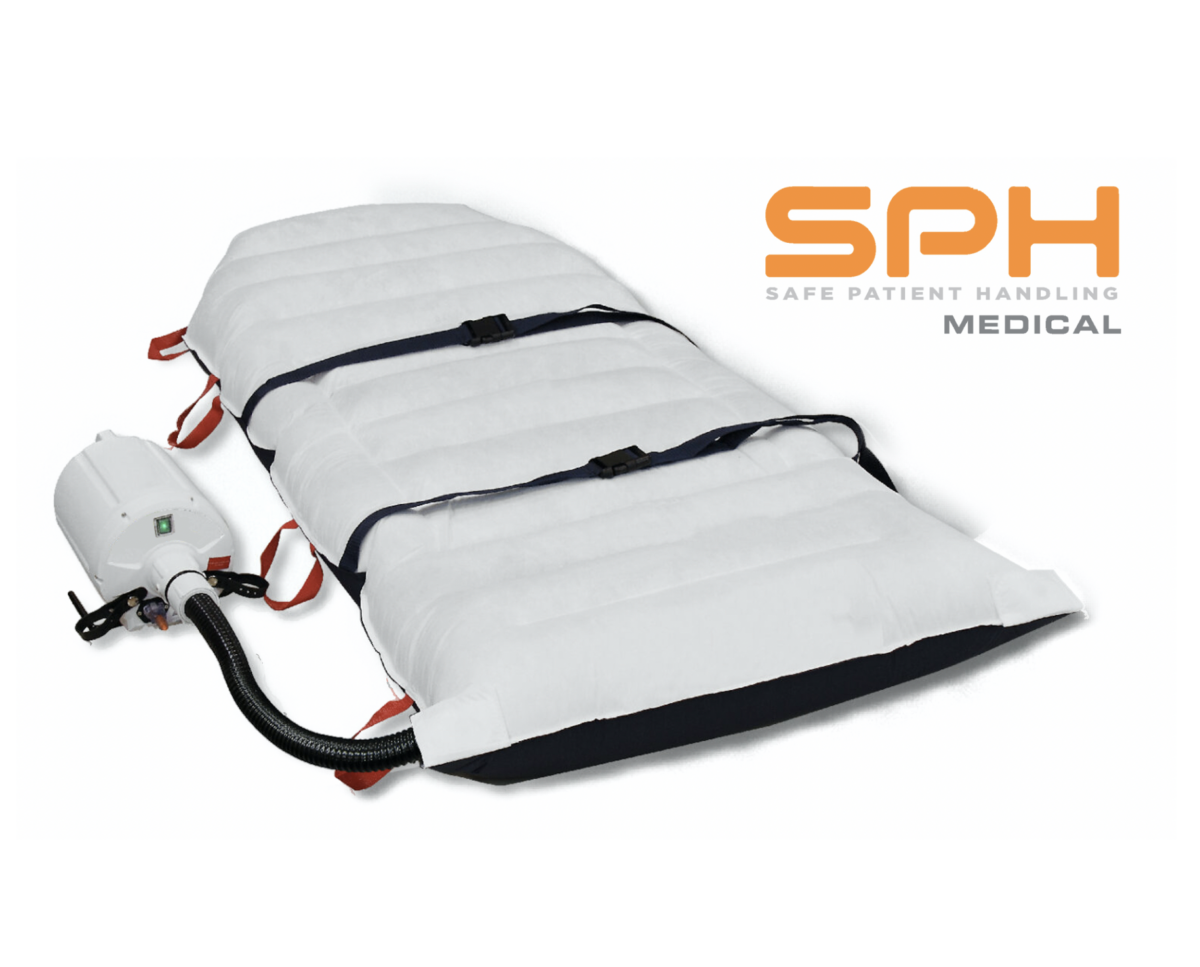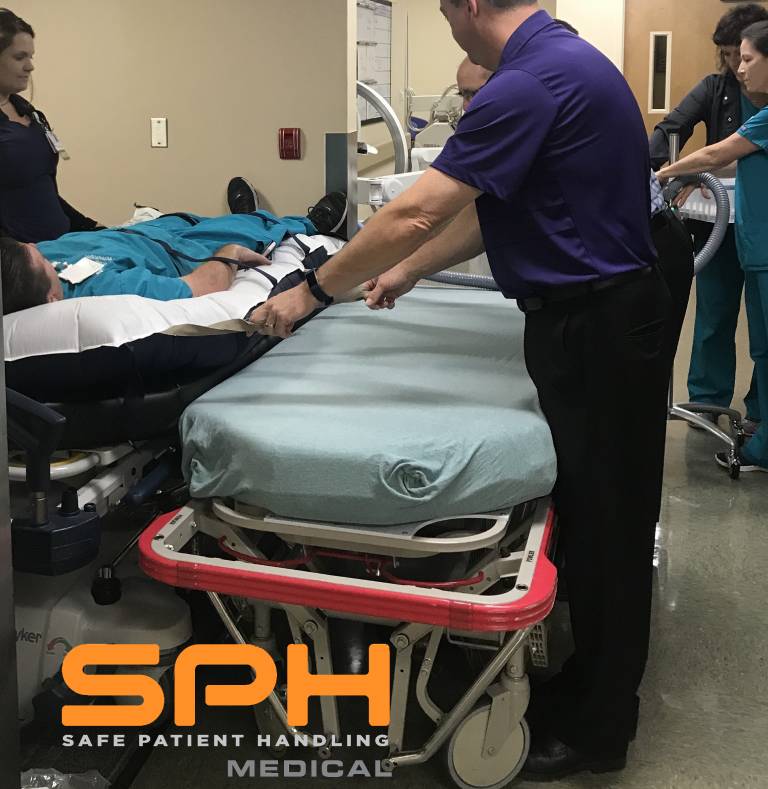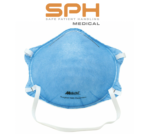In the United States, hospitals and nursing homes have become deadly businesses. Hospital injury rates, according to the Bureau of Labor Statistics, are approximately double those in all other private enterprises, that is, all non-governmental organizations. For example, in 2016, hospitals reported a rate of 5.9 non-fatal workplace injuries and illnesses per 100 full-time workers, compared to 2.9 non-fatal workplace injuries per 100 full-time workers across all industries in the United States. In addition, hospitals have a greater rate of injuries that need time off work than the construction and manufacturing industries. Safety features in friction-reducing devices such as the SPH Medical Air Transfer Mattress reduce the risk of injury to the patient and nursing staff.
Materials and Methods of Safe Patient Handling
The implementation of safe patient handling programs has helped hospitals reduce patient positioning injuries. Because of these efforts, numerous hospitals and hospital systems have witnessed considerable reductions in patient handling injuries. For example, lateral transfer is one of the most common patient-handling tasks. A lateral transfer occurs when a patient is moved from one surface to another, from a bed to another bed or from a bed to a medical cart. Historically, this movement has been done with a small number of staff members, and much of the force is often exerted by caregivers dragging across the surface to which the patient is being transported; hence putting the caregiver at risk of injury, which is most often to the shoulders and lower back. In addition, caregivers perform lateral transfers without knowing how much force is required, putting them at risk of harm. Some of the ways of handling lateral transfers include:
Draw sheet
Simplification of transfer across horizontal surfaces for lateral transfers was traditionally performed with a draw sheet underneath the patient. However, previous biomechanical studies have shown that utilizing a draw sheet to execute lateral transfers exposes caregivers to high spine pressures and necessitates a significant amount of external force. In addition, when employing a draw sheet, the disc’s compression force can surpass the maximum acceptable threshold of 3,400 Newtons, as defined by the National Institute of Occupational Safety and Health.
Friction-reducing devices
Using a friction-reducing transfer significantly reduces the amount of force required while performing transfers. Therefore, some recommended devices include sliding sheets, sliding boards, slip sheets or roller sheets. Although friction-reducing devices reduce the amount of effort required to perform lateral transfers, the overall force is still much more than the acceptable pushing and pulling limitations. Therefore, the ability of friction-reduction transfer devices is limited to minimizing pull forces and spinal force compression. Many of these devices do not adequately reduce risk of injury for some hospital programs.
Air-assisted devices
Air-assisted devices are a form of friction-reducing devices recommended for safe patient handling. AirPal invented this device, but other companies have created their versions of it. HoverMatt, for example, makes air-assisted devices, and since introducing the disposable or single patient use transfer mattress, their business has grown enormously. Air-assisted systems were developed to improve the safety, efficiency, and security of lateral transfers. As a result, air-assisted devices are rated substantially higher by caregivers than any other helpful equipment. Air-assisted systems not only minimize friction but also give support and comfort. As a result, nurses may more easily boost, reposition, and transfer patients, reducing the risk of strains, sprains, and career-ending back injuries for everyone.
Why Is the Air Transfer Mattress Recommended Over Other Friction-Reducing Devices?
With so many lateral patient transfer devices on the market, deciding one is the best fit for you and your institution can be difficult. The air transfer mattress is one of the most popular transfer devices. Air assist technology’s advantages have been thoroughly documented and proved. When the air blower unit is turned on, the air is blown out via the perforated holes in the bottom of the mattress. Friction between the mattress and the adjacent surface is reduced by the force of air passing through these tiny openings. Because there is less friction, the mattress may be moved more easily.
Safety features in friction-reducing devices such as the SPH Medical Air Transfer Mattress reduce the risk of injury to the patient and nursing staff. To improve patient security during transfer, two safety straps are connected over the patient. Disposable protective covers are available for the mattress which helps keep the transfer mattress clean between procedures. The launderable versions of Air Transfer Mattresses are typically water-resistant and free of latex. Another noteworthy safety aspect is that the mattress first inflates around the perimeter before moving on to the center to inflate and lift the patient safely. Thus, it acts as a cradle for the patient and helps to prevent tipping.
Some of the benefits of using an air transfer system include:
Safety and comfort
During transfers, air-assisted technology increases patient and caregiver safety and comfort. With less skin shear and bruising, lateral air transfer provides the patient with improved comfort and safety. The action of intra-hole communication redistributes the pull/push forces uniformly for a safe and easy transmission.
Stable positioning
The patient is moved into a more secure position by the inflated mattress, which reduces skin shear and bruising. Caregivers may securely move patients without lifting or straining since the mattress and the patient float on a cushion of air. By practically reducing lateral transfers and repositioning-related accidents.
Compatibility
It’s designed to withstand repeated applications and the toughest transfers for a wide range of patient characteristics. For artifact-free imaging, it’s radiolucent and MRI compatible.
Availability
Available in a variety of shapes and widths, with a weight restriction of 1200 pounds to fit most patients. The proprietary technology profiles and self-adjusts to each patient automatically. This allows for a balanced redistribution of the patient’s body weight, resulting in the safest and simplest patient transfer possible.
Significant cost savings
Previously, a significant amount of money was spent on various lateral transfers mechanisms, which were expensive and difficult to keep the appropriate supply on hand. The SPH Medical Lateral Transfer Mattress is a more cost effective option allowing the necessary inventory to be kept on hand to help reduce staff injuries.
Additionally, when you use an air transfer system, the additional expenditures of bearing direct cost of injury are considerably reduced. While satisfying statutory criteria for safe patient care, the Air Transfer System considerably aids in staff retention, improvement in staff morale, and improvement in overall efficiency of patient care and patient throughput for busy surgical departments.
Infection protection
SPH Medical offers a full range of single patient use, launderable and reusable Air Transfer Mattresses in various shapes and sizes that are all compatible with the most common air supplies on the market. The complete Air Transfer System includes the Air Transfer Mattress, an air supply with hose and power cord, and an optional transport stand. For Hospitals that are focused on reducing hospital acquired infections, the single patient use Air Transfer Mattresses have been the most common version implemented. Reducing infections and workplace injuries together is a win-win for everyone.
Contact SPH Medical to discuss reducing risk of injury to staff and patients in your facility.




